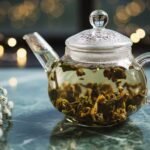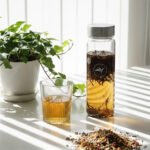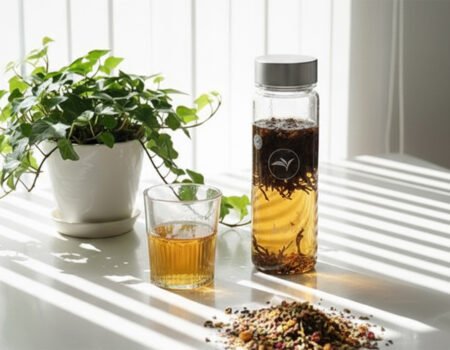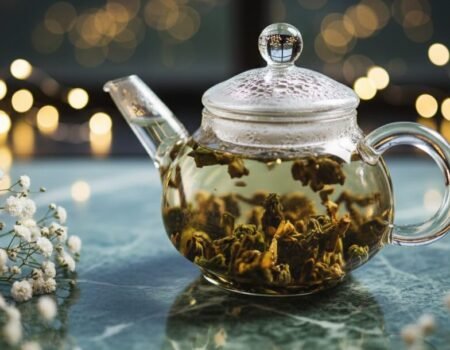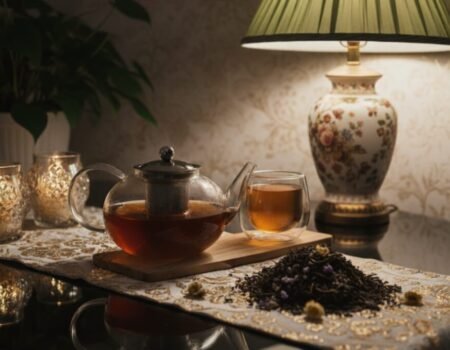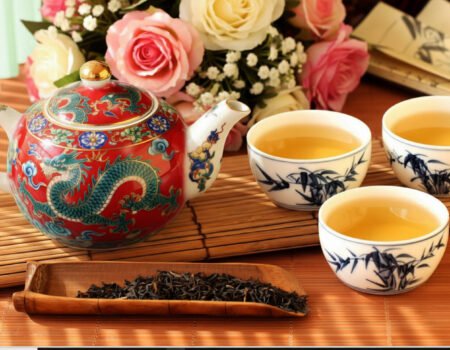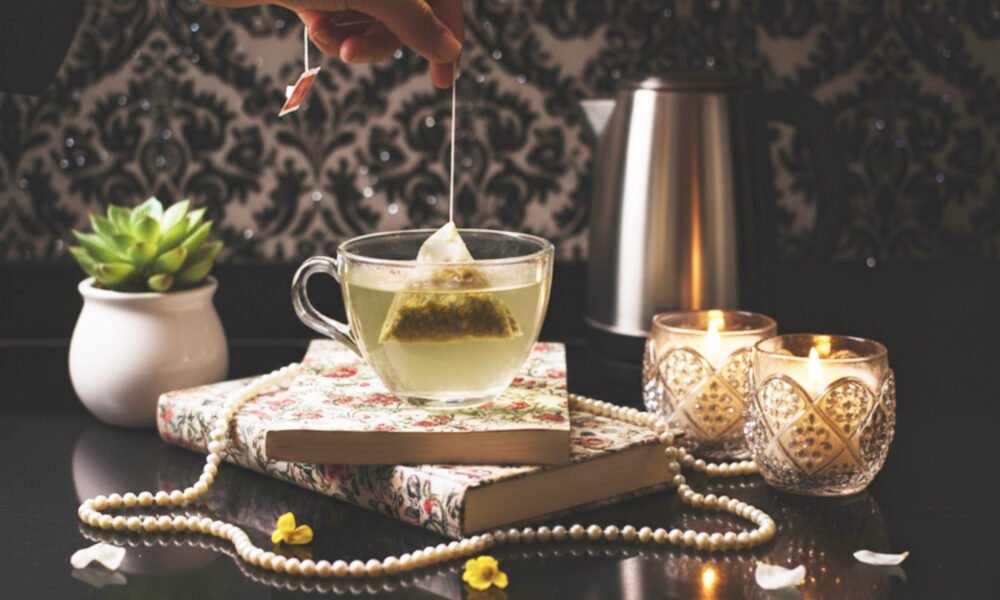
How to Brew Tea Bags: Tips for the Perfect Cup of Tea the Easy Way
Index
Brewing tea from tea bags seems simple, but many people end up with bitter, weak, or flat-tasting cups. You might be using the wrong water temperature, steeping for too long, or missing small details that make a big difference.
This guide will walk you through the essential steps to brew the perfect cup of tea using tea bags. We’ll cover everything from water temperature to steeping time for different tea types.
Key Takeaways
- Water temperature matters greatly for different teas: black tea needs boiling water (212°F/ 100°C), while green tea requires cooler water (around 175-185°F / 79-85°C).
- Steeping time varies by tea type: black teas need 3-5 minutes, green teas need only 1-2 minutes, and herbal teas require 5-7 minutes.
- Never squeeze tea bags after steeping. This releases bitter tannins that ruin the flavor of your tea.
- Use fresh, cold water rich in oxygen rather than previously boiled water. Water quality affects taste as much as the tea itself.
- Cold brewing creates naturally sweet iced tea without bitterness. Simply steep tea bags in cold water for eight hours in the refrigerator.
Choosing the Right Tea Bag
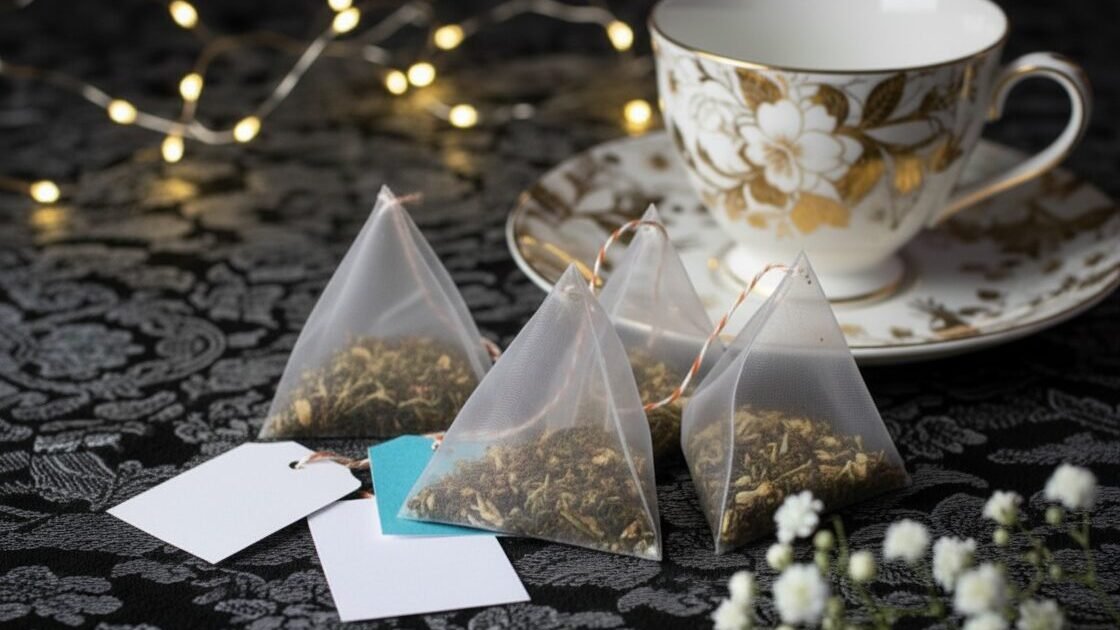
Tea bags come in many types, each offering unique flavors and strengths. Black tea provides a bold taste perfect for breakfast, while green tea delivers a lighter, grassy profile. Herbal options like chamomile or peppermint offer caffeine-free alternatives for evening enjoyment.
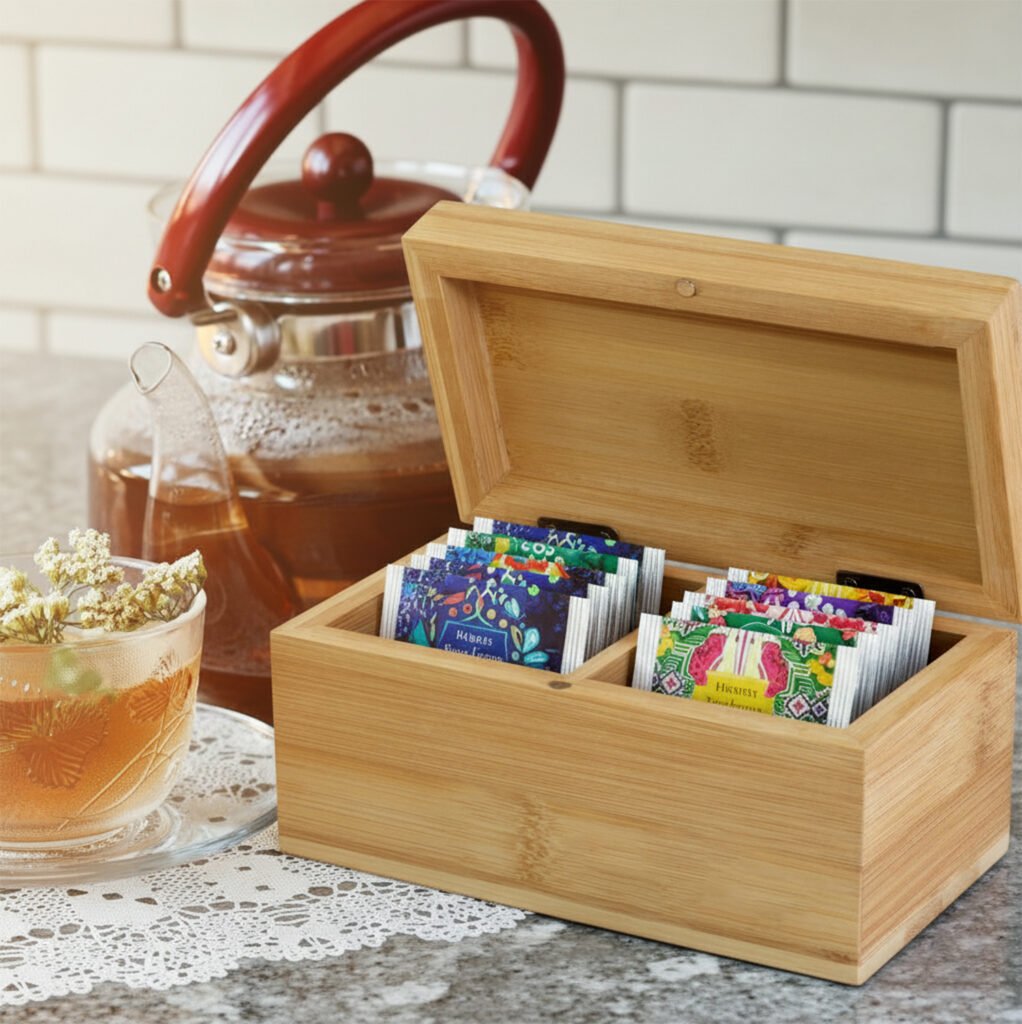
Quality matters greatly—look for whole leaf tea bags rather than dust-filled options that might taste bitter. The packaging should protect freshness with individual wrapping or airtight containers.
For the best cup, use one tea bag per 6-ounce serving, adjusting based on your taste preferences. Brands like Stash offer excellent seasonal varieties worth trying for special occasions or daily drinking.
Now that you’ve selected the perfect tea bag, let’s focus on preparing the water correctly to bring out its full flavor potential.
Preparing the Water
Water quality makes all the difference in your tea’s taste. Fresh, cold water contains more oxygen, which helps release the full flavor of your tea leaves.
Use fresh, cold water
Fresh, cold water forms the foundation of a great cup of tea. Start with water straight from your tap that hasn’t been sitting in your kettle overnight. The oxygen in fresh water helps bring out tea flavors fully, while stale, previously boiled water creates a flat-tasting brew.
Many tea drinkers notice this difference right away. Fill your kettle with cold rather than hot water from your faucet, as cold water contains more oxygen and fewer impurities.
Hard tap water can leave a film on your tea and alter its taste. For the best results, use filtered or bottled spring water if your tap water has high mineral content. This simple step can makes a huge difference in tea quality.
Tea experts agree that water quality matters just as much as the tea itself. The perfect cup starts with this crucial element – fresh, cold water that lets your tea’s true character shine through.
Heat to the optimal temperature for the tea type
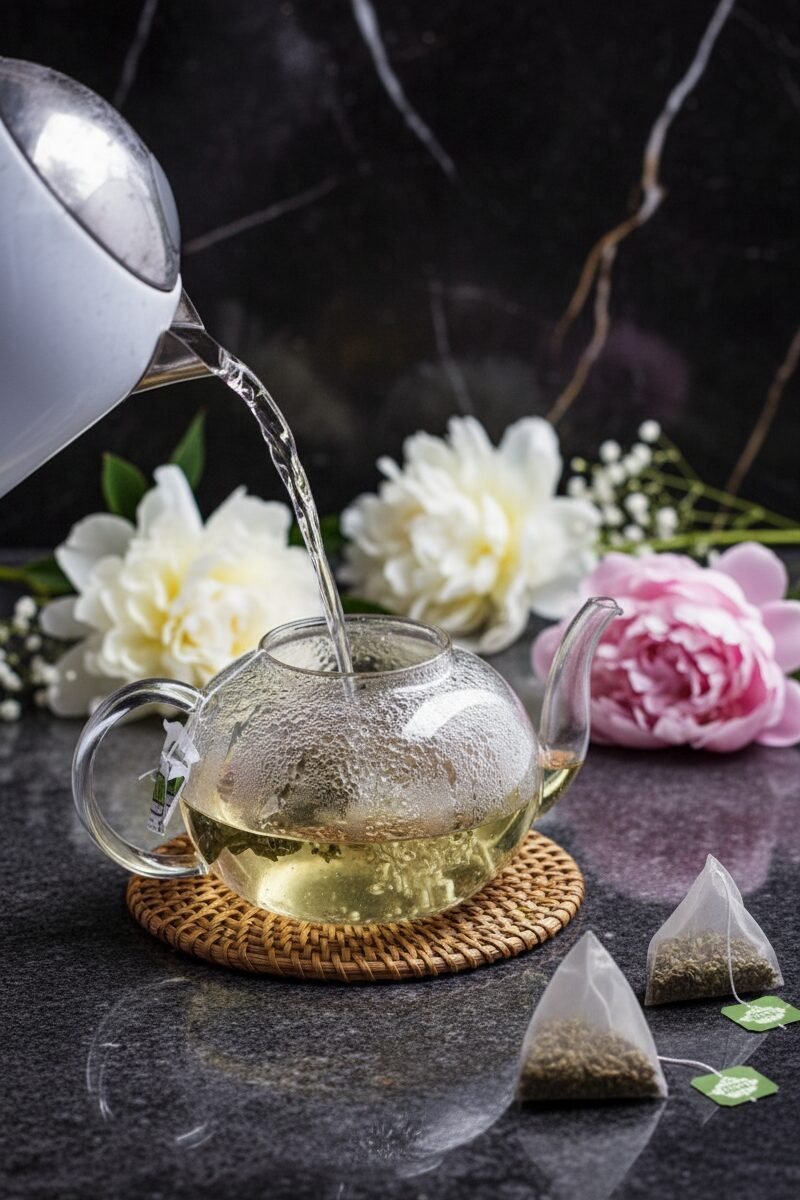
Different tea types need specific water temperatures for the best flavor. Black and herbal tea tastes best with water at a full boil (212°F/100°C), creating a rich, robust cup. Green and white teas require gentler treatment at around 175-185°F (79-85°C) to prevent bitterness and preserve their delicate flavors.
Using water that’s too hot can damage your teabag, while water that’s too cool might not release enough flavor.
Getting the temperature right makes a huge difference in your tea experience. Most home brewers make the mistake of using boiling water for all teas, which often ruins the taste of more sensitive varieties.
A kitchen thermometer helps achieve the perfect temperature, but you can also watch for visual cues – small bubbles forming for green tea or a rolling boil for black tea. This simple step transforms an ordinary cup into a perfect brew worth savoring.
Steeping Guidelines
Steeping your tea for the right amount of time makes all the difference between a perfect cup and a bitter disappointment. Black teas need 3-5 minutes in hot water, while green teas prefer just 1-3 minutes to release their best flavors.
Recommended steeping times for different teas (green, black, herbal, etc.)
Different tea types need specific brewing times to reach their best flavor. Black tea tastes perfect after 4-5 minutes in hot water, giving you a rich, full-bodied cup. Green and white teas require gentler treatment with just 1-2 minutes of steeping to avoid bitterness and preserve their delicate notes.
Herbal teas and chamomile need more time to release their flavors, about 5-7 minutes in your cup or teapot.
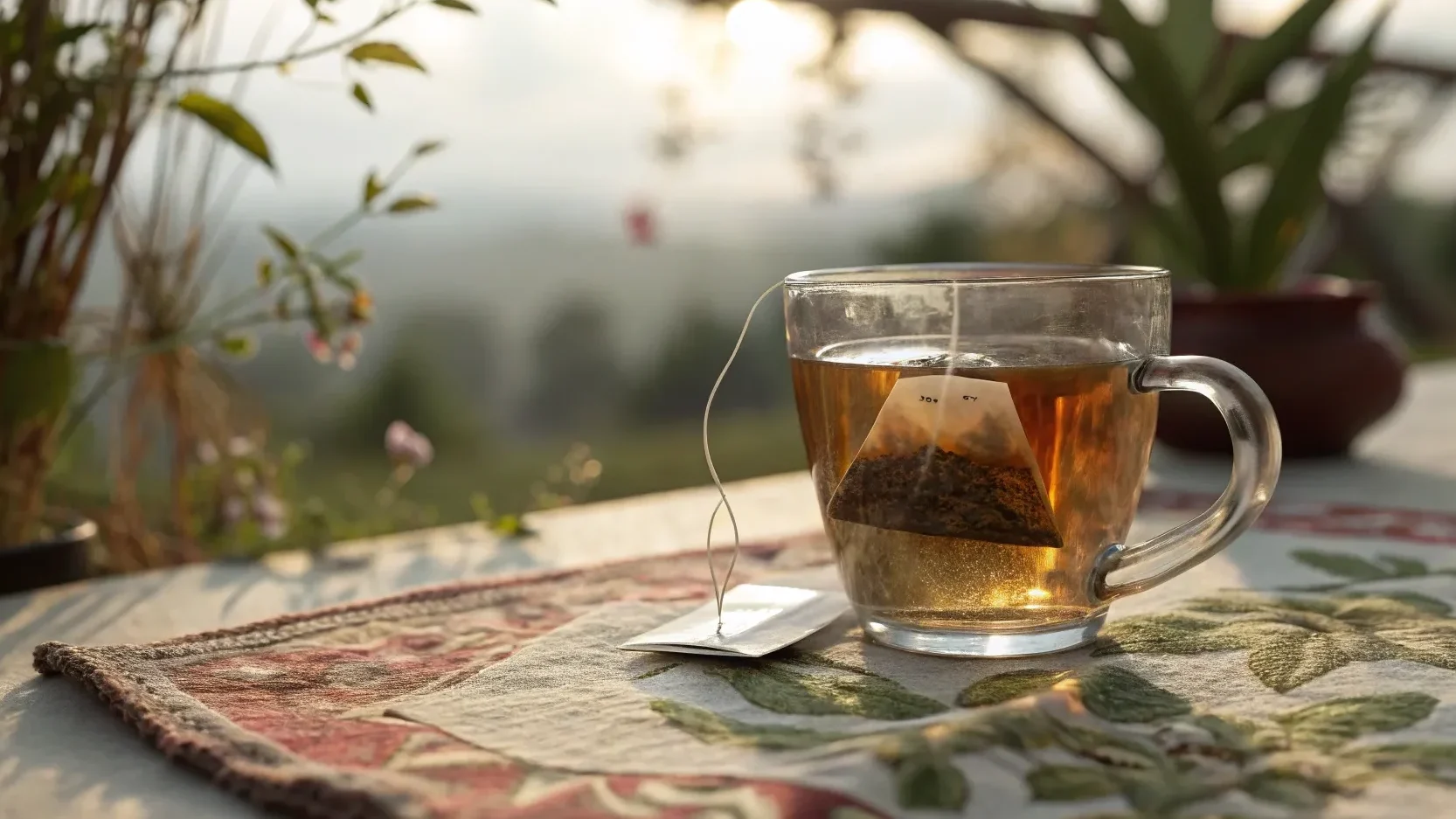
Tea bags make brewing simple, but timing matters greatly for taste quality. You’ll notice better results by watching the clock rather than guessing. Each tea variety has its own ideal moment – black tea develops strength with longer steeps, while green tea turns bitter if left too long.
Many tea drinkers keep a small timer nearby to track steeping time for the perfect cup every time.
Do not over-steep to avoid bitterness
Timing matters greatly after you’ve selected the right steeping duration for your tea type. Tea bags left in water too long release extra tannins that create a bitter, harsh taste.
Most tea drinkers agree that over-brewing ruins the natural flavor profile of even premium teas. For the perfect cup, set a timer and remove your tea bag promptly when time is up. Black tea becomes noticeably bitter after 5 minutes, while green tea turns unpleasant after just 3 minutes of excess steeping.
Tea bags should never stay in your cup while drinking. This common mistake leads to that unpleasant astringent quality that masks the tea’s true character. Another tip for a smoother cup: resist the urge to squeeze your tea bag against your spoon or cup.
This action forces out bitter compounds that would otherwise stay trapped in the leaves. Your taste buds will thank you for this simple step that makes a big difference in your final brew quality.
Enhancing the Flavor
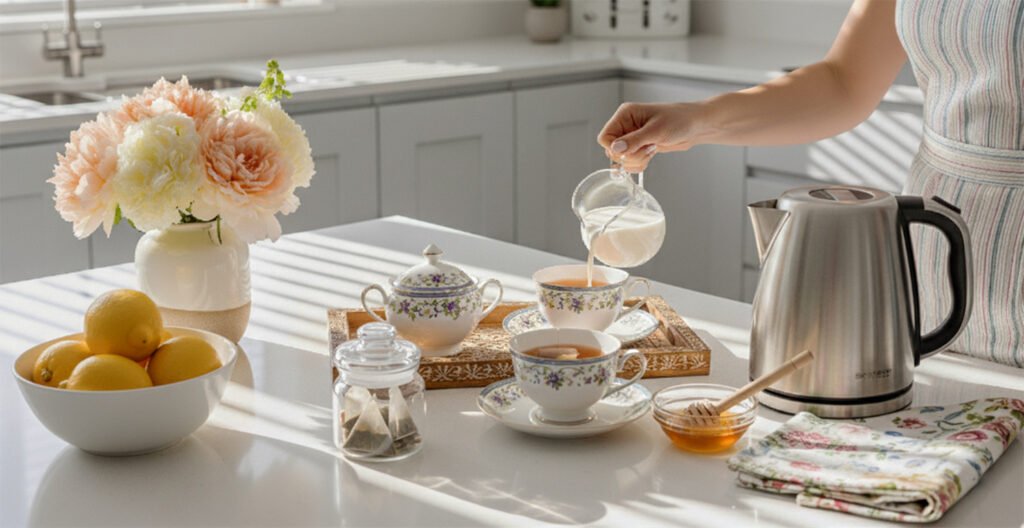
Tea tastes best with the right extras that match your taste buds. You can transform a simple cup into a rich treat with a splash of milk, a drizzle of honey, or a twist of lemon.
Add milk, honey, or lemon as desired
Tea offers a blank canvas for personal taste preferences. Many tea lovers add milk to black teas like English Breakfast or Yorkshire Tea for a smoother, creamier flavor. A splash of milk cuts the astringency while adding richness to your cup.
Honey serves as a natural sweetener that brings subtle floral notes to both black and herbal teas, while a squeeze of fresh lemon brightens green and black varieties with citrus tang.
The order of adding milk matters for practical reasons. Pour milk first into your cup if you’re brewing directly in the mug to prevent temperature shock to fine china or to cool very hot tea quickly.
Add milk after pouring tea if you prefer to judge the tea’s strength by its color first. Sugar or honey dissolves best in hot liquid, so stir these in before any cold additions like lemon juice or cream.
Avoid squeezing the tea bag
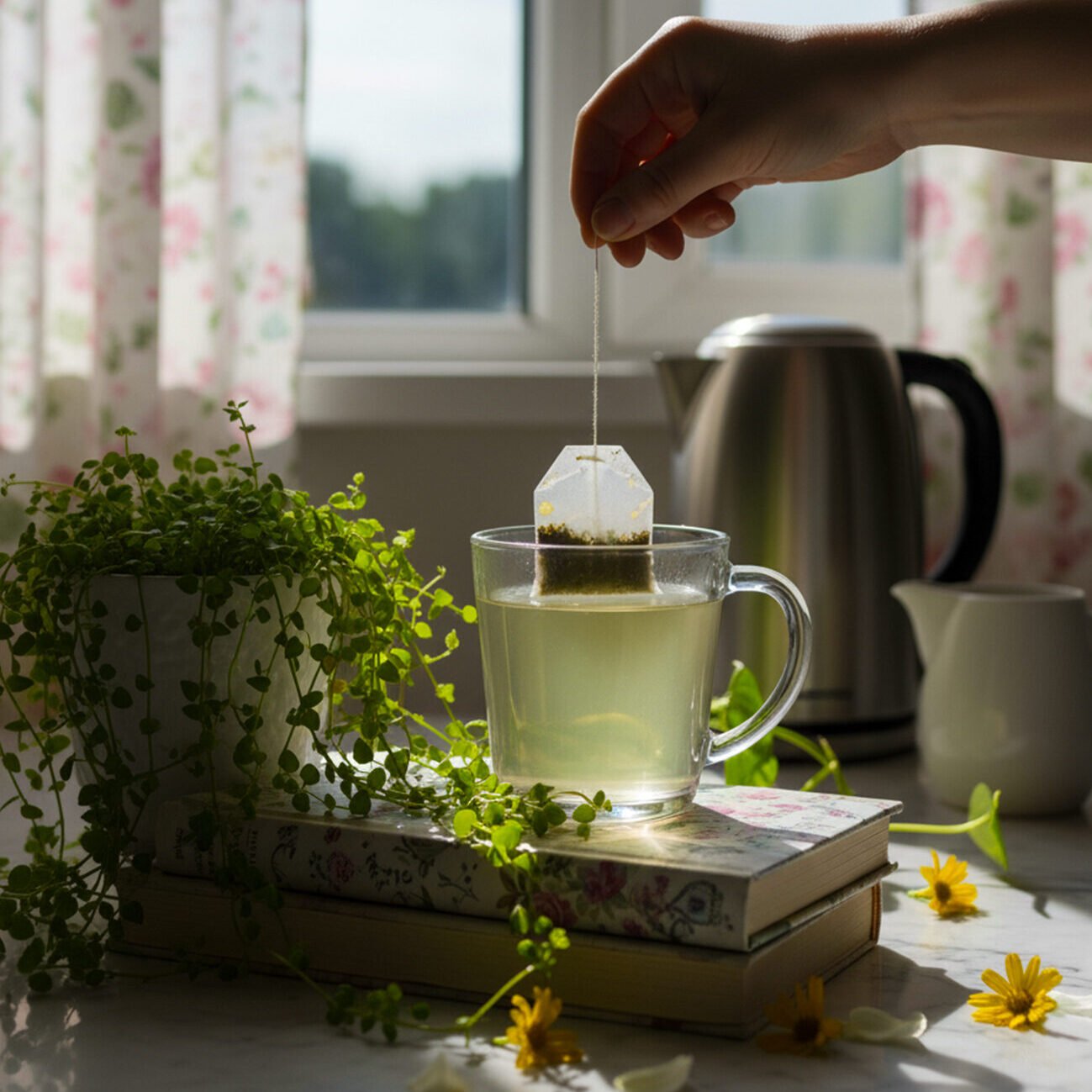
While adding honey or lemon can enhance your tea’s taste, what you do with the tea bag matters just as much. Many tea drinkers make the mistake of squeezing their tea bags against a spoon or the cup’s side.
This common habit forces the tea’s dregs into your cup, which creates unwanted bitterness. The dregs contain concentrated tannins that can overpower the delicate flavors you’ve worked to create.
For the best flavor, simply lift the tea bag out of your cup and place it on a spoon rest or saucer. The gentle removal keeps bitter compounds in the bag where they belong. Your tea will taste smoother and more balanced without the harsh notes that squeezing introduces.
This small change in your brewing routine makes a big difference in the final cup quality.
Brewing for Iced Tea
Iced tea offers a cool twist on your favorite brew that’s perfect for hot days. You can make a refreshing glass by brewing tea bags stronger than usual and pouring over ice cubes.
How to Brew Tea for Cold Consumption
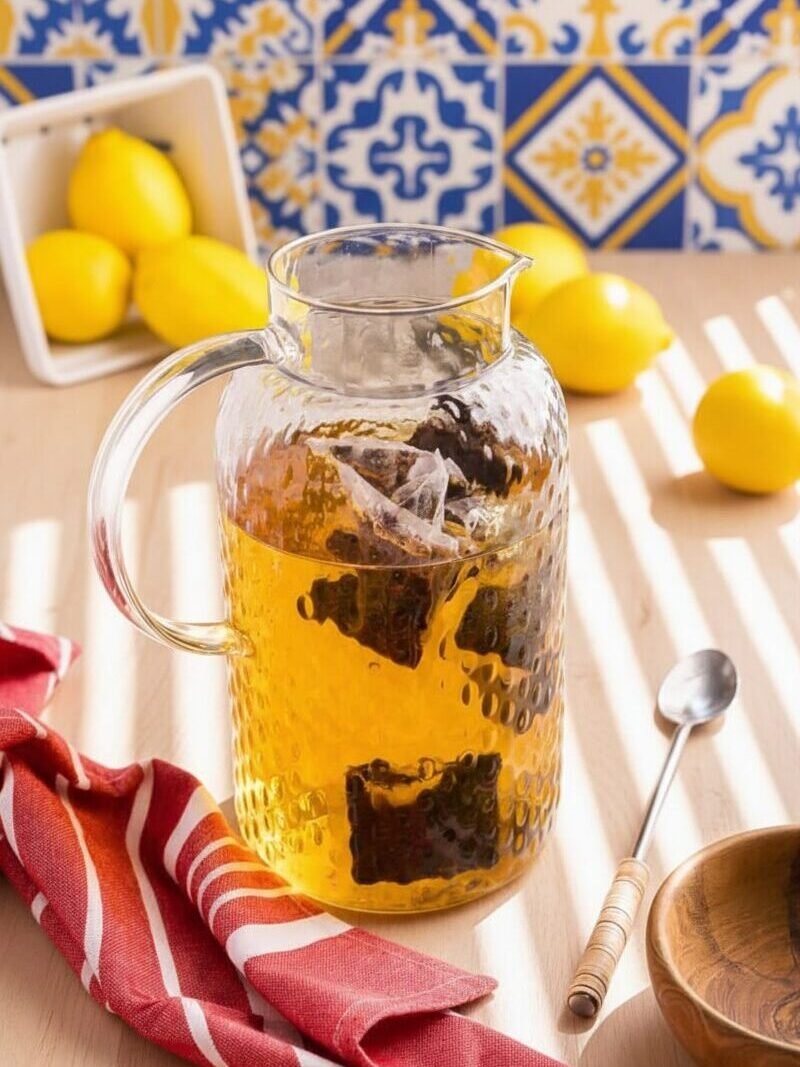
Cold brewing offers a simple way to make smooth tea without bitterness. Fill a glass pitcher with cold water and add one tea bag for every six ounces (~180 ml) of liquid. Place the mixture in your refrigerator for at least eight hours to extract the flavors properly.
This method creates a naturally sweet drink that needs less added sweetener than hot-brewed versions.
For a special Japanese technique, try ice brewing (koridashi). This method uses ice cubes placed directly on tea leaves to melt slowly. The gradual melting pulls gentle flavors from the leaves, creating an exceptionally sweet cup with none of the harsh notes that can come from hot water.
Both methods work great with black tea, green varieties, or herbal blends for refreshing summer drinks.
Common Mistakes to Avoid
Many tea drinkers make simple errors that ruin their brew. Water temperature matters greatly – boiling water poured on green tea leaves burns the delicate flavors, resulting in bitter tea.
Black tea needs hot water, while green tea requires cooler temperatures for best results. Timing also plays a crucial role in your tea experience. Under-brewing gives you flat, tasteless tea, while steeping too long creates an unpleasant, tannic taste that overpowers the natural flavors.
The quality of your teabags directly impacts your enjoyment. Inferior tea products often contain dust and fannings rather than proper tea leaves. These lower-grade materials brew quickly but lack the depth and character of better options.
Fresh water makes a difference too – never reuse already-boiled water as it loses oxygen and creates flat-tasting tea. Most people skip measuring their water, leading to inconsistent results each time they brew.
For the perfect cup, pay attention to these details that transform an ordinary drink into a delightful experience.
Make Your Own Tea Bag
Creating homemade tea bags with muslin or cheesecloth gives you complete control over your tea blend and strength. You’ll need a square of muslin or cheesecloth about 4-5 inches wide, your favorite loose leaf tea, and some kitchen string or unflavored dental floss.
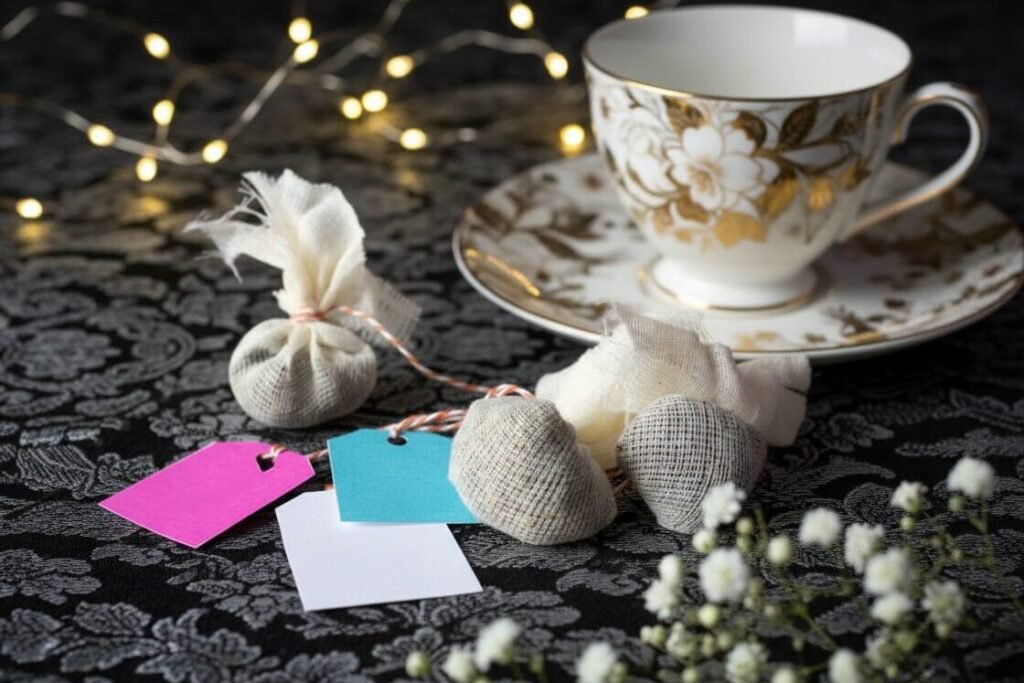
Place a tablespoon of loose tea in the center of the fabric square, gather the corners together above the tea, and tie securely with string, leaving enough length to drape over your cup rim. The porous fabric allows water to flow through freely while containing even fine tea particles, creating a cleaner brew than many commercial options.
Muslin offers a reusable option that withstands multiple uses and hot water temperatures without breaking down. After brewing, you can rinse the muslin pouch thoroughly and let it dry for your next tea session. We find that unbleached muslin works particularly well since it won’t impart any chemical flavors to your tea.
Cheesecloth serves as an excellent single-use alternative when you want the convenience of disposal without waste concerns, as it’s biodegradable and compostable. The looser weave of cheesecloth allows faster extraction, which works wonderfully for robust black teas that benefit from quick flavor release.
Many tea enthusiasts keep pre-cut squares of both materials in their kitchen drawer, ready to transform any loose leaf blend into a convenient tea bag experience.
Customizing Your Tea Experience
Now that you know what mistakes to avoid, you can start to make your tea truly yours. Tea offers endless ways to match your taste and mood. Try adding a splash of milk to black breakfast tea or a squeeze of lemon to green tea. Honey works well with herbal blends, while some teas shine best on their own.
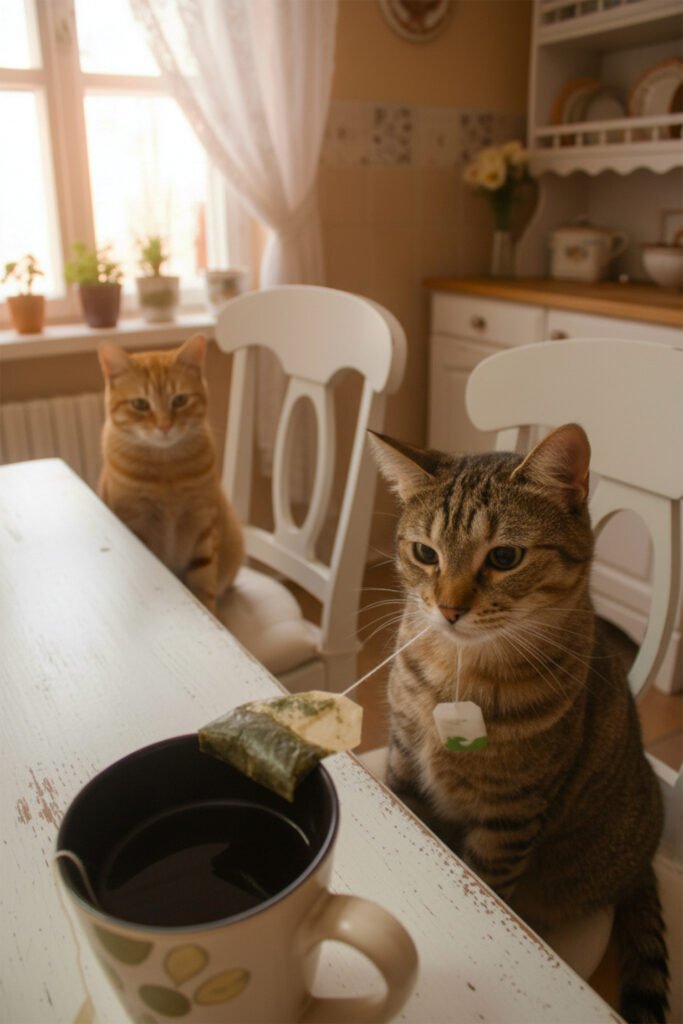
Your choice of teaware also matters greatly. Materials like ceramic or glass won’t alter the flavor of your brew. For iced tea fans, you’re in good company – this style makes up over 80% of tea consumed in the United States.
You can steep tea longer for a stronger taste or shorten the time for a milder cup. The water temperature affects flavor too – green teas need cooler water than black teas. Each small change creates a unique tea experience that fits exactly what you want.
Conclusion
Brewing the perfect cup of tea doesn’t need fancy equipment or expert skills. With fresh water at the right temperature and proper steeping time, you can enjoy a delightful cup every time.
Tea bags offer a quick, mess-free way to savor your favorite blend without the fuss of loose leaves. Your personal taste matters most, so feel free to add milk, honey, or lemon based on what you enjoy.
The simple act of making tea can become a peaceful daily ritual that brings warmth and comfort to your life.
FAQs
1. How do I make the perfect cup of tea with a tea bag?
To make a perfect cup of tea, start with freshly drawn water. Bring water to the right temperature for your type of tea. Put the tea bag into your mug, pour hot water over it, and let it steep for the time listed on the package.
2. Should I squeeze the tea bag after steeping?
Squeezing the tea bag can release bitter compounds. We suggest simply removing the tea bag when your tea reaches your desired strength without squeezing it.
3. What’s the best water temperature for brewing different types of tea?
Water temperature matters greatly when brewing tea. Use boiling water (212°F / 100°C) for black and herbal tea, and cooler water (around 175-185°F / 79-85°C) for green and white tea.
4. How long should I steep my tea bag?
Steeping time varies by tea type. Black tea needs 3-5 minutes, green tea requires 1-3 minutes, and herbal infusions benefit from 5-7 minutes. You can steep longer for stronger flavor, but this might increase bitterness.
5. Can I reuse tea bags?
You can reuse tea bags, especially for higher quality teas. The second cup will be milder than the first. This practice is common in many parts of the world, including the United Kingdom and China.
6. Is it better to make tea in a mug or teapot?
Both methods work well. Making tea in a mug is quick and convenient for single servings. Using a teapot creates a better infusion for multiple cups and is traditional for tea time in England. Either way, the key is proper water temperature and steeping time.
References
- https://twiningsusa.com/pages/how-to-brew-the-perfect-cup-of-tea?srsltid=AfmBOop3KxGRQzeMUN9bp9H9X6nQs5K13rrBI2HDrcMH4OaCaqhIdm3O
- https://twiningsusa.com/pages/how-to-brew-the-perfect-cup-of-tea?srsltid=AfmBOoqbf9cKO2hsH3EyKdPrrnn6Fxzj-xIUZTzzxNF5lY3nEqQDo3hI
- https://twiningsusa.com/pages/how-to-brew-the-perfect-cup-of-tea?srsltid=AfmBOore415qTkEmkBDGQ4cC6SisYuHyEGW8AXCj20p7XX1wks_WYfJ4
- https://twinings.co.uk/blogs/news/how-to-make-a-cup-of-tea-perfectly
- https://rishi-tea.com/blogs/journal/why-water-temperature-is-important-when-brewing-tea?srsltid=AfmBOoqLiKWBqCJgr-K6X96W_4RDrdEhycz8UxjPwDl8NFPTRcHedDEV
- https://artfultea.com/blogs/101/tea-brewing-temperature-guide?srsltid=AfmBOoqSS_Ai0H742HQkV1jSSOVA4U3CSfFLpGJwqyH6dv6NOJMiaPgY
- https://artfultea.com/blogs/101/loose-leaf-tea-steep-time?srsltid=AfmBOopPW9qmXXCuLDY-CJHkDVmGoxdA7Zfk7qdNjd2_YBUBJTwYrh2V
- https://www.smithbrothersfarms.com/how-to-brew-the-perfect-cup-of-tea (2025-02-12)
- https://pmc.ncbi.nlm.nih.gov/articles/PMC11521711/
- https://nutritionsource.hsph.harvard.edu/food-features/tea/
- https://shop.dechuantea.com/page/tea_preparation?lang=en-US&srsltid=AfmBOoq9FGVV7Jy1bMAHXILwHSpJhR4pEMJPWf6jxiT3Bh3guYrXjMwv
- https://artfultea.com/blogs/101/how-to-cold-brew-tea?srsltid=AfmBOoqrc68bk8pzyGUXXyxIut8de9j1F45-Ffy3RNZS-1zy25AlFEO5
- https://www.marthastewart.com/8069664/how-make-iced-tea (2025-03-31)
- https://www.teaformeplease.com/12-mistakes-when-brewing-tea/ (2024-04-22)
- https://theexoteas.com/blogs/tea-guides/how-to-make-a-perfect-tea-mistakes-to-avoid?srsltid=AfmBOooUlZe4z-RSfyV3mhjZJqjYUOCPYDGhaBrkqmCWVI_A4YqQXt9w
- https://www.consumerreports.org/food/how-to-make-the-perfect-cup-of-tea-a3628637729/ (2024-10-25)
- https://twiningsusa.com/pages/how-to-brew-the-perfect-cup-of-tea?srsltid=AfmBOooyDNkyQM6k8ksR5jsoFdRacnzFiWuFi-4oEKOBChYJkQM6F80u

